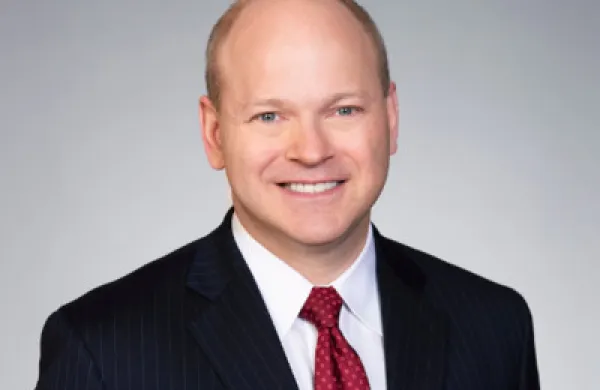It seems everywhere you look, someone else is dipping their toe into the derivatives market. Last year, Advantus Capital Management gave it a try; this year, it’s taking the plunge.

St. Paul, Minn.-based Advantus manages about $17 billion – half of it for its parent, insurer Securian Financial Group; the other half comes from other insurers, pension funds, endowments, foundations and the like. The firm also subadvises three Ivy mutual funds.
Sebald spoke with DailyII’s Jonathan Shazar about using derivatives in institutional portfolios, opportunities in the CDS market and whether his clients are biting.
DailyII: Last year, your firm began using derivatives in some of its products. Why?
Chris Sebald: Our strategy is very security focused, so we try to take larger-than-indexed positions in our fixed-income securities. If we like something, we like to own a fair amount of it. That focus is the big driver of our excess return over the benchmark. Derivatives give us the ability to expand the universe of securities that we can use.
By using the basic interest rate swaps and fixed-income futures, [derivatives] allow us to adjust the portfolio’s high-level risk metrics. What that gives us is the ability to no longer have to think about whether a security is three-month, three-year, 10-year or 30-year. We can buy any securities across the security spectrum that we think have value, and then we just hedge back to the difference to where we want the portfolio to be positioned relative to our benchmarks.
DII: So it’s an issue of risk management?
CS: I would say it’s the risk control desire, but it also opens up the opportunities set. It allows us to look at securities that we wouldn’t look at before, and it also allows us to not have to make a decision: Do we like this particular security better than one that we already own that’s in that particular duration space? We can own both of them, and hold the securities that we perceive to have value in the portfolio, and not have to get rid of one that we like just to adjust our curve exposure.
DII: Right now, you’re using interest rate swaps and fixed-income futures. Any plans to widen the scope of your derivatives usage?
CS: What we’re going to be expanding into shortly – probably the second or third quarter of this year – is the use of credit derivatives. Same names, many times, but, let’s say, for instance, we have two securities we want to choose between, A and B. If we think that A looks better than B, we would choose it on the cash side, but now we have the ability to choose between A-cash, B-cash, A-synthetic and B-synthetic. That increases the likelihood of our achieving a higher risk-reward relationship with the securities that we choose, plus, the use of credit derivatives give us the ability to short securities, which, effectively, we can’t really do in a long-only portfolio versus benchmark.
DII: The CDS market is expanding at a fantastic rate, both in terms of users and new products.
CS: It’s very difficult to see all the uses that investors may make of credit derivatives, so, even though it’s exploded a lot already, I wouldn’t say it’s over at all. It’s just an extension – a globalization of our markets which clearly have an impact on credit derivatives, and vice versa, making it more convenient for investors to use such securities that they don’t have a lot of history, background and knowledge in. Access is probably the biggest thing.
DII: Why now?
CS: It’s not so much a timing of the market; it’s more a recognition of the opportunities that exist and how those opportunities fit up with what we do well. This is another market that just fits right in with what we do. Understanding both credit and the structure of the CDS market gives up another option opportunity to take advantage. Particularly, as we’ve seen over the last year, the volatility in credit derivatives can be a little bit higher. That’s an attractive feature for us, because our volatility isn’t driven substantially by changes in interest rates, shape of the yield curve, widening or tightening in spreads in general; the movement among sectors is more driven by the securities-specifics.
We look for things that have a higher volatility; it gives us a greater potential for achieving the kind of single-security returns we’re looking for, and a more diversified portfolio or strategy that we’re looking for.
DII: Which products and clients will use the credit derivatives?
CS: At this point we are not using credit derivatives yet in our broad, full-duration strategy. We expect to as clients allow us to add them. Portfolios that tend to have a little more flexibility in terms of guidelines, and as we can migrate other clients to these opportunities we will do that.






